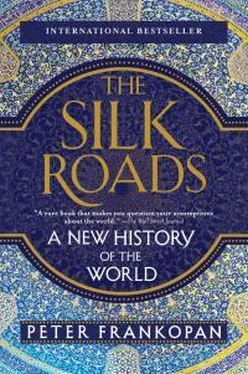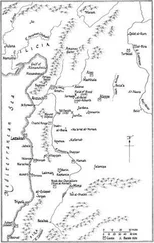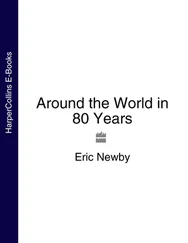38. Cited by V. Zubok, A Failed Empire: The Soviet Union in the Cold War from Stalin to Gorbachev (Chapel Hill, NC, 2007), p. 262; Coll, Ghost Wars , p. 48.
39. “Meeting of the Politburo Central Committee,” 17 March 1979, pp. 142–9, in Dimitrakis, Secret War , p. 133.
40. Lyakhovskii, Tragediya i doblest’ Afgana , pp. 109–12.
41. Pravda , 13 January 1980.
42. Braithwaite, Afgantsy , p. 77.
43. “The Current Digest of the Soviet Press,” American Association for the Advancement of Slavic Studies 31 (1979), 4.
44. Zubok, A Failed Empire , p. 262.
45. Lyakhovskii, Tragediya i doblest’ Afgana , p. 215.
46. Pravda , 13 January 1980.
47. Cited by Lyakhovskii, Tragediya i doblest’ Afgana , p. 252.
48. Brzezinski downplays such warnings, Power and Principle , pp. 472–5; Vance, Hard Choices , pp. 372–3; Glad, Outsider in the White House , pp. 176–7.
49. D. Harris, The Crisis: The President, the Prophet, and the Shah: 1979 and the Coming of Militant Islam (New York, 2004), p. 193.
50. Ibid., pp. 199–200.
51. Farber, Taken Hostage , pp. 41–2.
52. Saunders, “Diplomacy and Pressure, November 1979—May 1980,” in W. Christopher (ed.), American Hostages in Iran: Conduct of a Crisis (New Haven, 1985), pp. 78–9.
53. H. Alikhani, Sanctioning Iran: Anatomy of a Failed Policy (New York, 2001), p. 67.
54. “Rivals doubt Carter will retain poll gains after Iran crisis,” Washington Post , 17 December 1979. See here C. Emery, “The Transatlantic and Cold War Dynamics of Iran Sanctions, 1979–80,” Cold War History 10.3 (2010), 374–6.
55. “Text of Khomeini speech,” 20 November 1979, NSC memo to President Carter, cited by Emery, “Iran Sanctions,” 374.
56. Ibid.
57. Ibid., 375.
58. “The Hostage Situation,” Memo from the Director of Central Intelligence, 9 January 1980, cited by Emery, “Iran Sanctions,” 380.
59. Carter, Keeping Faith , p. 475.
60. Ibid. Also G. Sick, “Military Operations and Constraints,” in Christopher, American Hostages in Iran , pp. 144–72.
61. Woodrow Wilson Center, The Origins, Conduct, and Impact of the Iran–Iraq War, 1980–1988: A Cold War International History Project Document Reader (Washington, DC, 2004).
62. “NSC on Afghanistan,” Fritz Ermath to Brzezinski, cited by Emery, “Iran Sanctions,” 379.
63. “The State of the Union. Address Delivered Before a Joint Session of the Congress,” 23 January 1980, p. 197.
64. M. Bowden, Guests of the Ayatollah: The First Battle in America’s War with Militant Islam (2006), pp. 359–61.
65. J. Kyle and J. Eidson, The Guts to Try: The Untold Story of the Iran Hostage Rescue Mission by the On-Scene Desert Commander (New York, 1990); also P. Ryan, The Iranian Rescue Mission: Why It Failed (Annapolis, 1985).
66. S. Mackey, The Iranians: Persia, Islam and the Soul of a Nation (New York, 1996), p. 298.
67. Brzezinski to Carter, 3 January 1980, in H. Brands, “Saddam Hussein, the United States, and the Invasion of Iran: Was There a Green Light?,” Cold War History 12.2 (2012), 322–3; also see O. Njølstad, “Shifting Priorities: The Persian Gulf in US Strategic Planning in the Carter Years,” Cold War History 4.3 (2004), 30–8.
68. R. Takeyh, “The Iran–Iraq War: A Reassessment,” Middle East Journal 64 (2010), 367.
69. A. Bani-Sadr, My Turn to Speak: Iran, the Revolution and Secret Deals with the U.S. (Washington, DC, 1991), pp. 13, 70–1; D. Hiro, Longest War: The Iran–Iraq Military Conflict (New York, 1991), pp. 71–2; S. Fayazmanesh, The United States and Iran: Sanctions, Wars and the Policy of Dual Containment (New York, 2008), pp. 16–17.
70. Brands, “Saddam Hussein, the United States, and the Invasion of Iran,” 321–37.
71. K. Woods and M. Stout, “New Sources for the Study of Iraqi Intelligence during the Saddam Era,” Intelligence and National Security 25.4 (2010), 558.
72. “Transcript of a Meeting between Saddam Hussein and his Commanding Officers at the Armed Forces General Command,” 22 November 1980, cited by H. Brands and D. Palkki, “Saddam Hussein, Israel, and the Bomb: Nuclear Alarmism Justified?,” International Security 36.1 (2011), 145–6.
73. “Meeting between Saddam Hussein and High-Ranking Officials,” 16 September 1980, in K. Woods, D. Palkki and M. Stout (eds), The Saddam Tapes: The Inner Workings of a Tyrant’s Regime (Cambridge, 2011), p. 134.
74. Cited by Brands and Palkki, “Saddam, Israel, and the Bomb,” 155.
75. “President Saddam Hussein Meets with Iraqi Officials to Discuss Political Issues,” November 1979, in Woods, Palkki and Stout, Saddam Tapes , p. 22.
76. Cited by Brands, “Saddam Hussein, the United States, and the Invasion of Iran,” 331. For Saddam’s paranoid views, see K. Woods, J. Lacey and W. Murray, “Saddam’s Delusions: The View from the Inside,” Foreign Affairs 85.3 (2006), 2–27.
77. J. Parker, Persian Dreams: Moscow and Teheran since the Fall of the Shah (Washington, DC, 2009), pp. 6–10.
78. Brands, “Saddam Hussein, the United States, and the Invasion of Iran,” 331.
79. O. Smolansky and B. Smolansky, The USSR and Iraq: The Soviet Quest for Influence (Durham, NC, 1991), pp. 230–4.
80. “Military Intelligence Report about Iran,” 1 July 1980, cited by Brands, “Saddam Hussein, the United States, and the Invasion of Iran,” 334. Also H. Brands, “Why Did Saddam Hussein Invade Iran? New Evidence on Motives, Complexity, and the Israel Factor,” Journal of Military History 75 (2011), 861–5; idem, “Saddam and Israel: What Do the New Iraqi Records Reveal?,” Diplomacy & Statecraft 22.3 (2011), 500–20.
81. Brands, “Saddam Hussein, the United States, and the Invasion of Iran,” 323.
82. Sick, All Fall Down, pp. 313–14; J. Dumbrell, The Carter Presidency: A Re-Evaluation (Manchester, 2005), p. 171.
83. Brzezinski, Power and Principle , p. 504.
84. J.-M. Xaviere (tr.), Sayings of the Ayatollah Khomeini: Political, Philosophical, Social and Religious: Extracts from Three Major Works by the Ayatollah (New York, 1980), pp. 8–9.
85. E. Abrahamian, Khomeinism: Essays on the Islamic Republic (London, 1989), p. 51.
86. T. Parsi, The Treacherous Alliance: The Secret Dealings of Iran, Israel and the United States (New Haven, 2007), p. 107.
87. R. Claire, Raid on the Sun: Inside Israel’s Secret Campaign that Denied Saddam Hussein the Bomb (New York, 2004).
88. Woods, Palkki and Stout, Saddam Tapes , p. 79.
89. “Implications of Iran’s Victory over Iraq,” 8 June 1982, National Security Archive.
90. The Times , 14 July 1982.
91. G. Shultz, Turmoil and Triumph: Diplomacy, Power and the Victory of the American Deal (New York, 1993), p. 235.
92. B. Jentleson, Friends Like These: Reagan, Bush, and Saddam, 1982–1990 (New York, 1994), p. 35; J. Hiltermann, A Poisonous Affair: America, Iraq and the Gassing of Halabja (Cambridge, 2007), pp. 42–4.
93. “Talking Points for Amb. Rumsfeld’s Meeting with Tariq Aziz and Saddam Hussein,” 14 December 1983, cited by B. Gibson, Covert Relationship: American Foreign Policy, Intelligence and the Iran–Iraq War, 1980–1988 (Santa Barbara, 2010), pp. 111–12.
94. Cited by Gibson, Covert Relationship , p. 113.
Читать дальше











